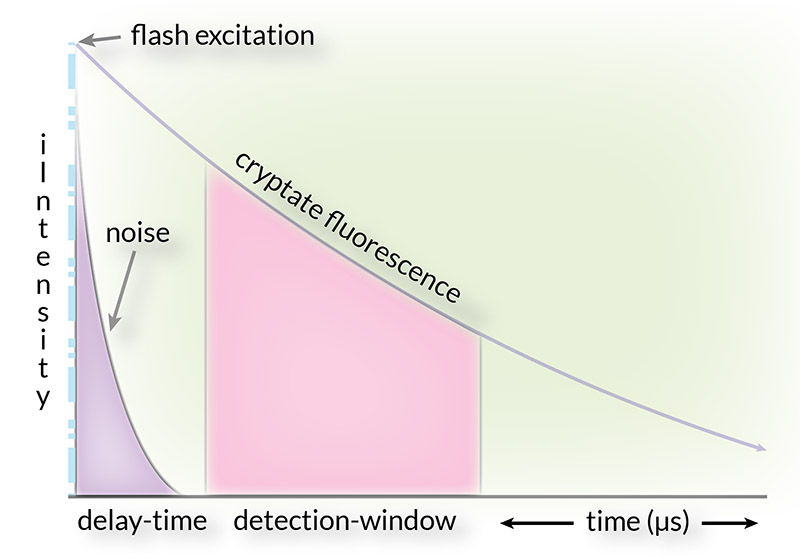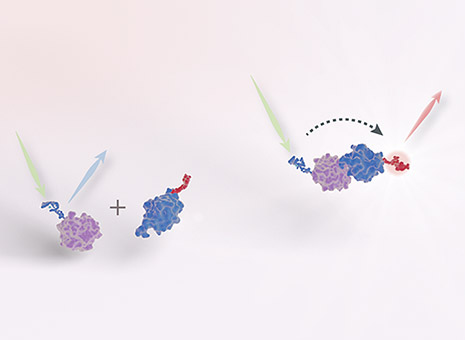Interaction between biomolecules can be assessed by coupling biomolecular partners to fluorescent labels (donor or acceptor), and measuring the amount of energy transfer (FRET). FRET technology aids drug discovery researchers over other platforms by providing increased assay flexibility, reliability, assay sensitivity, higher throughput, and fewer false positives1,2. These features, allied with automated liquid handling and robust detection instrumentation, allow for a broad range of applications in HTS.
Why Time-Resolved FRET?
Todays preferred choice of drug screening technology is TR-FRET, which uses the extended fluorescence emission decay lifetimes typical of rare-earth lanthanides to impart a short time-delay between FRET donor excitation and emission. This delay provides a means to separate “true” signal from short-lived background fluorescence, and reduce interference from compound fluorescence and other assay artifacts. This is possible due to the extended emission half-life characteristic of rare-earth lanthanide cryptates compared to traditional donor fluorophores1. Time-Resolved FRET’s greatest assets are high assay robustness and Z’ primes.

Ubiquitin & Homogeneous Real-Time TR-FRET

Our homogeneous TR-FRET conjugation assays enable detection of ubiquitin chain formation in Real-Time. Similarly, chain-formation on target substrates can be detected. Simplified the platform utilizes Europium or Terbium Cryptates and an appropriate corresponding acceptor fluorophores, coupled to ubiquitin monomers (among additional conjugation machinery; UBA1, E2, E3 Ligase). When reactions are initiated ubiquitin chain formation is detected via measurement of Cy5 (or an appropriate Alexaflour) and cryptate emission in real-time. Chain disassembly can be observed with the addition of appropriate DUBs and similarly detected. Other technologies are just obsolete.
References
1) Hermanson, Greg T. Bioconjugate Techniques. 2nd ed. Amsterdam: Academic, 2008. 474-76. Print.
2) Degorce, François, et al. "HTRF: a technology tailored for drug discovery–a review of theoretical aspects and
recent applications." Current chemical genomics 3 (2009): 22.

